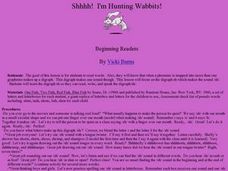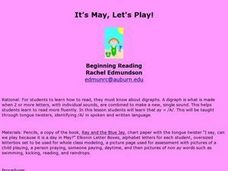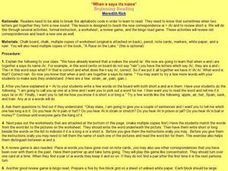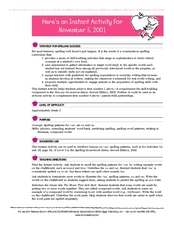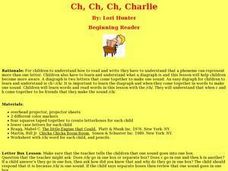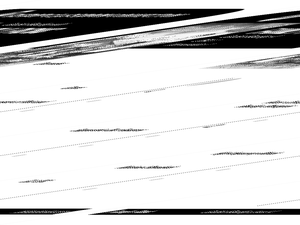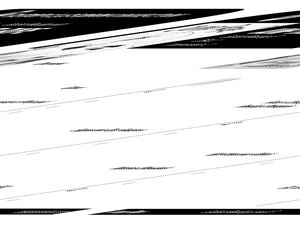Curated OER
Champions Check
First graders identify consonant digraphs in written and spoken language. After a brief discussion of the combinations of /c/ and /h/ that comprise the /ch/ digraph, 1st graders practice identifying initial and final placement of the...
Curated OER
Open Wide
First graders make the sound of /o/ relating it to the sound they make when the doctor asks them to open their mouth and say "ahhhh". They think of different words that contain the /o/ and identify it as it is used in a sentence and...
Curated OER
Uh??? I Don't Know
Students explore the short /u/ sound. They practice making the sound and use letterboxes to spell 'u' words. They recite tongue twisters and read with a partner, 'Fuzz and the Buzz.' They practice writing 'u' words and draw a circle...
Curated OER
Let's Read and Read!
Students discover how to hold their mouths to form the /o/ sound and that it may be hidden in different words. They say /o/ and then repeat a tongue twister that contains many /o/ words and practice writing it on primary lined paper....
Curated OER
Shhhh! I'm Hunting Wabbits!
Students identify the consonant digraph -sh in words and phrases. They practice recognizing the digraph /sh/ through tongue twisters and storytelling. Students read and spell words and pseudowords containing the -sh digraph.
Curated OER
Chirping Chickens
First graders study the /ch/ diagraph using a tongue twister which they listen to and recite. Next, they use Elkonin letterboxes to make words with the /ch/diagraph. They listen to Jean Luc-Fromental's, "Broadway Chicken" twice, the...
Curated OER
Learning to Read With Superman Speed
Students practice techniques to become more fluent readers by reading more proficiently and with faster speed. They stress mastery of the d=/d/, e=/e/ and de=/de/ sounds in spoken and written words. The book, "John Henry," by Julius...
Curated OER
Around the World with Bud the Sub
First graders review the recently taught vowel /o/. They then form the sound for /u/ telling whether it is a closed or open vowel sound and repeat it several times together. They practice a /u/ tongue twister saying it together and...
Curated OER
It's May, Let's Play!
Pupils explore digraphs. They discuss the ay=/A/. Students learn a tongue twister to help them remember the ay=/A/ correspondence. They read a story and identify /A/ in spoken and written language. Pupils spell words using the ay=/A/.
Curated OER
Fish Wish
Students identify /sh/ sound when reading and writing words with the /sh/diagraph. They practice saying "Shhhh" and then read the tongue twister "She sells sea shells and fish by the sea shore." They complete a worksheet circling...
Curated OER
Beginning to Read
Students explore the short /u/ sound. They practice making the sound, noticing how their mouths move to make it. They recite tongue twisters with short /u/ words and use letterboxes to spell 'u' words. They identify short /u/ words as...
Curated OER
When A Says Its Name
Students are introduced to the concept of vowel digraphs. They identify the digraph /ai/ in spoken language. After a brief discussion, students apply the rule for reading and spelling words containing the /ai/ digraph by playing word bingo.
Curated OER
Diphthongs
Second graders examine and identify the diphthongs /oi/ and /oy/. They discuss the two ways that this sound is spelled and read words containing this vowel combination, create a list of words with /oi/ and /oy/, and complete a worksheet.
Curated OER
I Love to Eat Apples!
Students study the a=/a/ correspondence by first examining how they hold their mouths when biting into an apple. They practice the sound while reciting a tongue twister and making a gesture each time they hear the /a/. While looking at...
Curated OER
Here's an Instant Activity for November 5, 2001
Third graders practice spelling ou words. In this phonics and spelling lesson, 3rd graders brainstorm words using the 'ou' spelling pattern. Students review compound words and brainstorm compounds words. Students complete the 'instant...
Curated OER
EA Words
Students determine if the "e" sound is long or short in words. In this language arts lesson, students practice discriminating between the long and short "e" sounds by practicing with word cards that are embedded in the lesson. This...
Curated OER
Ow Sound
First graders write words containing the "ow" sound and use those words to write sentences. In this simple language arts lesson, 1st graders view models of sentences written by their teacher which contain examples of the "ow" sound, then...
Curated OER
Rhyming Fruits and Vegetables
Students describe fruits and vegetables using rhyming verses. They discuss the Five Fruits and Vegetables a Day campaign and rhyming words, and create a rhyming riddle using the "Rhyming Riddles" worksheet.
Curated OER
Somewhere
Second graders write their own version of the book "Somewhere" in this lesson. They listen to the book and locate the rhyming words within the text. They find the number of syllables per word in the text, and compare the number of...
Curated OER
Spelling: Onset and Rime
Second graders make words. In this onset/rime lesson, 2nd graders change the first sound of a word (the onset) to create a new word. This lesson also reinforces student knowledge of vowel sounds.
Curated OER
Ch, Ch, Ch, Charlie
Students explore the /ch/ phoneme and how it just a combination of the /c/ and /h/ sounds. They recite /ch/ tongue twisters and write 'ch' words using letterboxes. They identify /ch/ words while reading the story, 'Chica Chica Boom Boom.'
Curated OER
Guided Reading: Family Picnic
Students blend phonemes. In this guided reading lesson plan, students create words by blending isolated phonemes. Students read a book discussing families.
Curated OER
Guided Reading: Jump Rope
Students blend phonemes to decode words. In this guided reading lesson, students evaluate different comprehension strategies to aid reading. Students make predictions based on picture clues and use patterned sentences to facilitate...
Curated OER
Giddyup Gilbert
First graders think about telling a horse to go faster by saying "giddyup" every time they hear the /g/ sound. They say the /g/ sound together and try to hear the sound in the word frog and then practice saying a tongue twister making...






